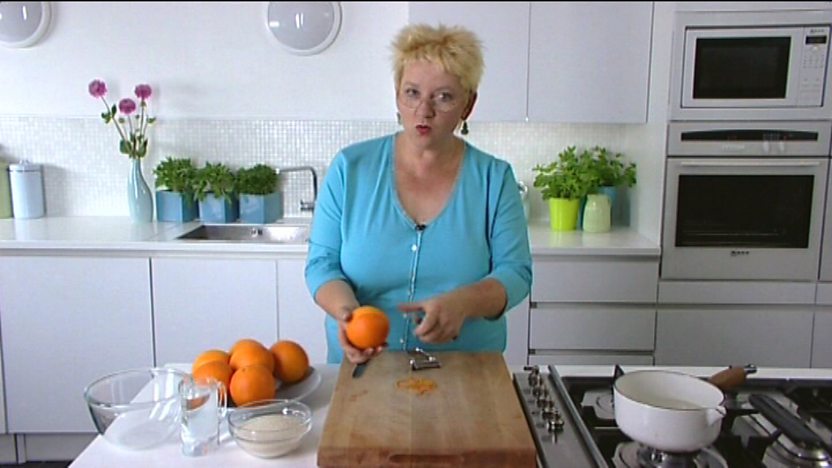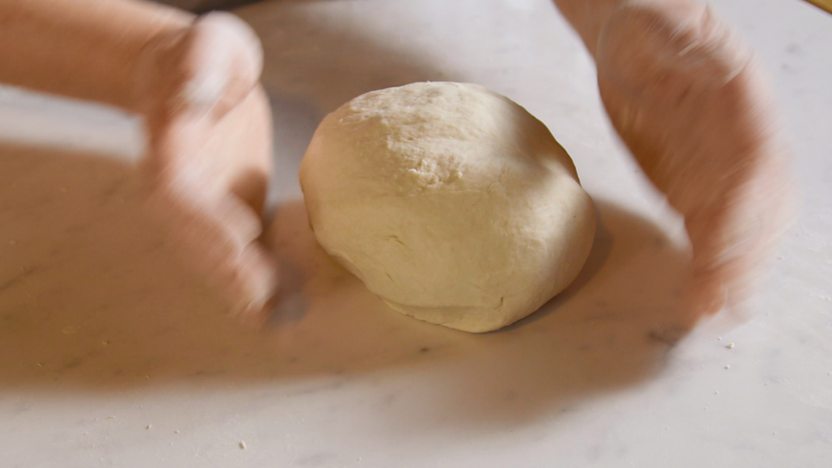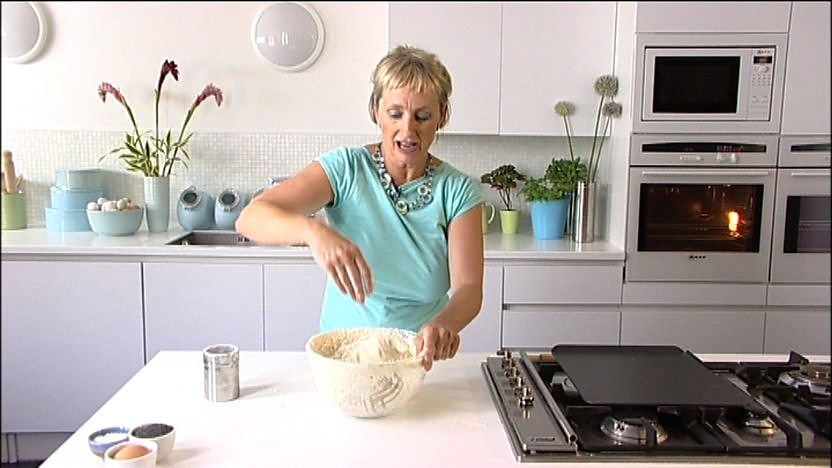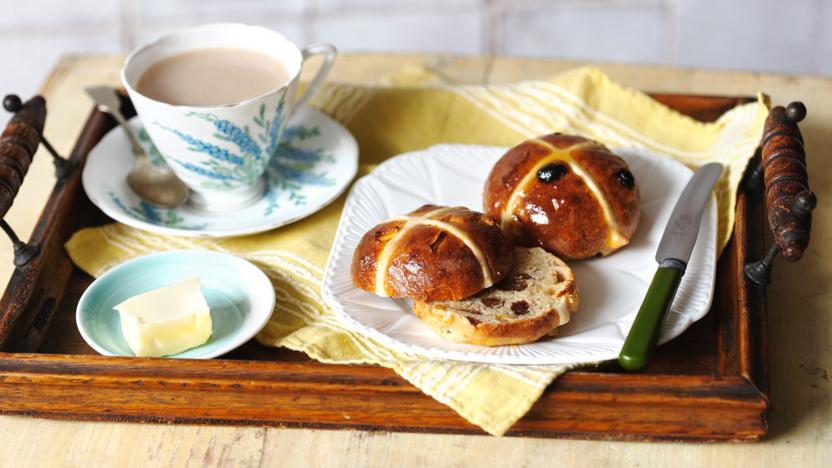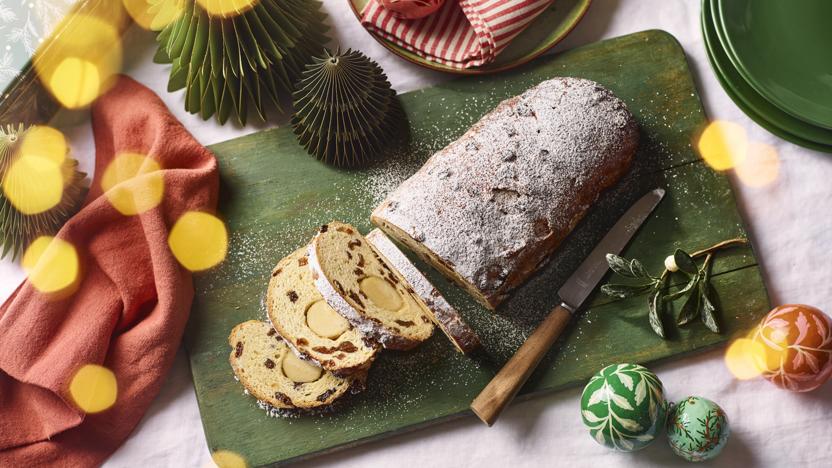Hot cross buns

Traditional spiced, sticky glazed fruit buns with pastry crosses. Served as a classic Easter treat, the buns can also be enjoyed at any time of year.
Each serving provides 313 kcal, 8.5g protein, 57g carbohydrates (of which 16.5g sugars), 5g fat (of which 3g saturates), 2g fibre and 0.5g salt.
Ingredients
For the buns
- 625g/1lb 6oz strong white flour, plus extra for dusting (see tip for alternatives)
- 1 tsp salt
- 2 tsp ground mixed spice (or a combination of ground spices such as cinnamom, allspice, nutmeg, cloves and ginger)
- 45g/1½oz unsalted butter, cubed, plus extra for greasing
- 85g/3oz caster sugar
- 1 unwaxed lemon, finely grated zest only (alternatively use finely grated zest of ½ orange or 1 tangerine/satsuma)
- 1½ tsp dried fast-action yeast
- 1 free-range egg
- 275ml/9½fl oz tepid milk (non-dairy milks are also suitable)
- 125g/4½oz dried mixed fruit of your choice
For the topping
- 2 tbsp plain flour (see tip for alternatives)
- 1 tbsp golden syrup or runny honey, gently heated, for glazing (see tip for alternatives)
Method
For the buns, sieve the flour, salt and mixed spice into a large mixing bowl, then rub in the butter using your fingertips. Make a well in the centre of the mixture, then add the sugar, lemon zest and yeast. Beat the egg and add to the flour with the tepid milk. Mix together to a form a soft, pliable dough.
Turn out the dough onto a lightly floured work surface. Carefully work the mixed dried fruit into the dough until well combined. Knead lightly for 5 minutes, or until smooth and elastic.
Grease a large, warm mixing bowl with butter. Shape the dough into a ball and place into the prepared bowl, then cover with a clean teatowel and set aside in a warm place for 1 hour to prove.
Turn out the proved dough onto a lightly floured work surface and knock back the dough. Shape into a ball again and return to the bowl, then cover again with the teatowel and set aside for a further 30 minutes to rise.
Turn out the dough onto a lightly floured work surface and divide into 12 equal pieces. Roll each piece into a ball, then flatten slightly into a bun shape using the palms of your hands. Cover the buns again with the teatowel and set aside to rest for 5–10 minutes.
Grease a baking tray with butter and transfer the buns to the tray. Wrap the tray very loosely in baking paper, then place inside a large polythene bag (or cover loosely in lightly oiled cling film). Tie the end of the bag tightly so that no air can get in (if using) and set aside in a warm place for a further 40 minutes to rise. Preheat the oven to 240C/220C Fan/Gas 8.
Meanwhile, for the topping, mix the plain flour to a fairly thick smooth paste with 2 tablespoons cold water (you may need to use slightly less or more water to get the right consistency). When the buns have risen, remove the polythene bag and the greaseproof paper. Spoon the flour mixture into a piping bag (or a plastic food bag with a corner snipped away) and pipe a cross on each bun.
Transfer the buns to the oven and bake for 8–12 minutes, or until pale golden brown. As soon as you remove the buns from the oven, brush them with the hot golden syrup, then set aside to cool on a wire rack.
Recipe Tips
For the dough, you can use up to half wholemeal or spelt flour instead of all white, but you may need to add a little extra milk or water. You can even use plain flour at a push, but be aware that the dough won't rise as much and the end result may be a tad heavy.
For the topping, any white-coloured flour will work, from cornflour to rice flour. Feel free to use what you have in – just ensure the paste is thick enough (different flours will absorb differing amounts of water).
If you haven't got golden syrup or honey for glazing, any sugar syrup will do (agave syrup, maple syrup etc). Or try dissolving 1 heaped tsp of any granulated sugar in a little hot water.
